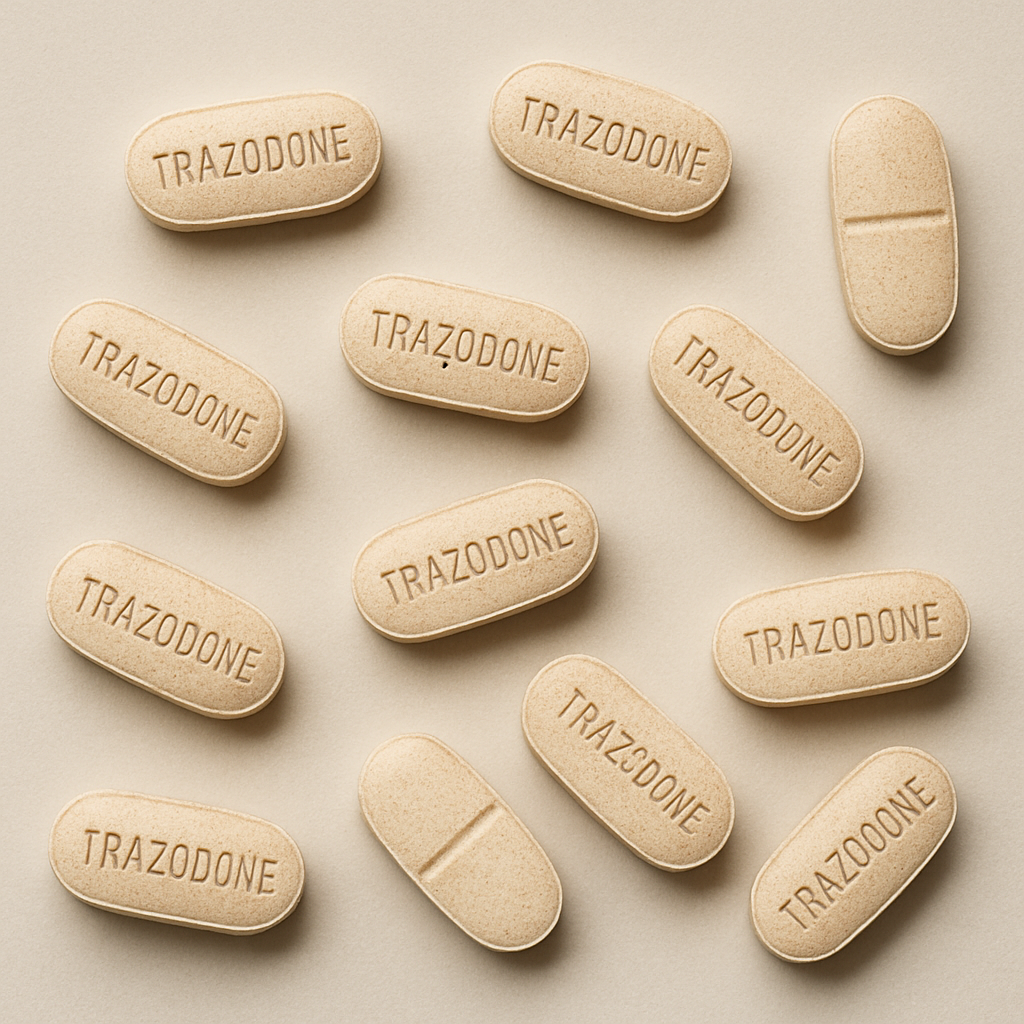Trazodone is a versatile medication primarily prescribed to treat depression. However, it is also used for other conditions such as anxiety, insomnia, and certain types of pain. Understanding the appropriate trazodone dosage for various conditions is crucial for achieving optimal treatment outcomes while minimizing side effects. This article provides insights into trazodone dosage guidelines and how they can be adjusted depending on the specific condition being treated.

Mechanism of Action
Trazodone is classified as a serotonin antagonist and reuptake inhibitor (SARI). It works by balancing serotonin levels in the brain, which helps improve mood, sleep, and overall mental well-being. The medication’s ability to block serotonin receptors while inhibiting serotonin reuptake contributes to its antidepressant effects, making it effective for a broad range of symptoms.
Unique Properties
Due to its unique mechanism of action, trazodone is often favored for its potential to treat multiple conditions with fewer side effects compared to other antidepressants. Unlike traditional selective serotonin reuptake inhibitors (SSRIs), trazodone’s sedative properties make it beneficial for patients with insomnia. Its versatility allows it to be used in different therapeutic contexts, enhancing its value in clinical practice.
Historical Context and Usage
Originally developed in the 1960s, trazodone was primarily used to treat major depressive disorders. Over time, its application expanded as its efficacy in treating anxiety, sleep disorders, and even chronic pain became evident. Today, trazodone is a well-regarded option for patients who need a multi-faceted approach to their symptoms, offering both antidepressant and sedative effects.
Trazodone Dosage Guidelines
General Dosage Considerations
When prescribing trazodone, healthcare providers consider several factors, including the patient’s age, weight, overall health, and the condition being treated. The medication is available in various forms, including immediate-release and extended-release tablets, which influence how the drug is absorbed and utilized by the body. It’s crucial to tailor the dosage to the individual’s specific needs and health profile to ensure effectiveness while minimizing potential side effects.
Influence of Patient Demographics
Patient demographics play a significant role in determining the appropriate trazodone dosage. Age and gender can affect how the body metabolizes medication, necessitating adjustments. For instance, elderly patients may require lower doses due to decreased liver function and increased sensitivity to medications. Similarly, weight can impact drug distribution in the body, influencing the optimal dosage required to achieve therapeutic effects.
Importance of Monitoring
Regular monitoring of trazodone therapy is essential to ensure its effectiveness and safety. Healthcare providers should assess the patient’s response to the medication, including any adverse effects. This ongoing evaluation allows for timely adjustments to the dosage or formulation, helping to maintain the balance between therapeutic benefits and potential side effects. Engaging patients in open communication about their experiences with trazodone can facilitate effective treatment adjustments.
Dosage Adjustments for Specific Conditions

Depression
- Starting Dose: 150 mg per day
- Maintenance Dose: 150-300 mg per day
- Maximum Dose: Up to 400 mg per day (in divided doses), and in hospital settings, up to 600 mg may be used.
For depression, trazodone is typically taken in divided doses throughout the day. Patients should closely follow their healthcare provider’s instructions to achieve the best results. Regular assessment of symptom improvement and side effects is necessary to determine whether dosage adjustments are needed. In some cases, gradual dose increases may be required to reach the desired therapeutic effect without overwhelming the patient with side effects.
Anxiety
- Typical Dose: 75-150 mg per day
In treating anxiety, trazodone is often prescribed at lower doses compared to depression. The sedative effects of trazodone can help alleviate anxiety symptoms, making it a suitable option for patients who experience anxiety-related sleep disturbances. Monitoring for sedation levels is critical, as excessive drowsiness can impact daily functioning. Adjustments in dosage or timing may be necessary to optimize treatment outcomes.
Insomnia
- Typical Dose: 25-100 mg at bedtime
Trazodone’s sedative properties make it an effective treatment for insomnia. The medication is usually taken at bedtime to help patients fall asleep and stay asleep through the night. Lower doses are generally sufficient for treating sleep disorders. It’s important to evaluate the patient’s sleep patterns and overall sleep quality to determine the effectiveness of the therapy. Adjustments may be required if the patient experiences residual daytime drowsiness or if sleep disruptions persist.
Chronic Pain
- Typical Dose: 50-150 mg per day
Trazodone is sometimes used off-label for managing chronic pain conditions, such as fibromyalgia. The medication can help improve sleep quality and mood, indirectly reducing pain perception. Dosage adjustments may be necessary based on the individual’s response to treatment. Collaborative care with pain specialists can enhance treatment planning, ensuring trazodone is integrated effectively into a comprehensive pain management strategy.
Potential Side Effects and Considerations

by Laura Chouette (https://unsplash.com/@laurachouette)
Common Side Effects
While trazodone is generally well-tolerated, it can cause side effects, particularly when dosages are adjusted. Common side effects include dizziness, drowsiness, dry mouth, and blurred vision. Patients should report any severe or persistent side effects to their healthcare provider. Managing these side effects often involves dosage adjustments or additional interventions, such as lifestyle modifications or concurrent use of supportive therapies.
Interactions and Precautions
Trazodone can interact with other medications, which may affect its efficacy or increase the risk of side effects. Patients should inform their healthcare provider of all medications they are taking, including over-the-counter drugs and supplements. Additionally, trazodone should be used with caution in individuals with a history of heart conditions, seizures, or liver disease. Close monitoring and consultation with specialists may be required to minimize interaction risks.
Special Populations
- Elderly Patients: Lower doses are often recommended due to increased sensitivity to medications and a higher risk of side effects. Careful titration and monitoring are essential to avoid complications such as falls or cognitive impairment.
- Pregnancy and Breastfeeding: Trazodone should only be used if the potential benefits outweigh the risks, as it can cross the placenta and is present in breast milk. Consultation with obstetricians and pediatricians is crucial to ensure the safety of both the mother and the infant.
Monitoring and Follow-Up
Regular follow-up appointments with a healthcare provider are essential for patients taking trazodone. These visits allow for monitoring of the medication’s effectiveness, adjustment of dosages if necessary, and assessment of any side effects or interactions. Engaging patients in their treatment plans, encouraging them to share their experiences, and involving them in decision-making can enhance adherence and treatment success.
Conclusion
Trazodone is a versatile medication with applications in treating depression, anxiety, insomnia, and chronic pain. Understanding the appropriate dosage for each condition is vital for achieving desired outcomes while minimizing risks. Patients should work closely with their healthcare providers to tailor trazodone therapy to their specific needs and monitor for any changes in their health status. By doing so, they can maximize the benefits of trazodone and enhance their overall quality of life. Through informed and collaborative care, patients can navigate the complexities of their conditions with greater confidence and comfort.


